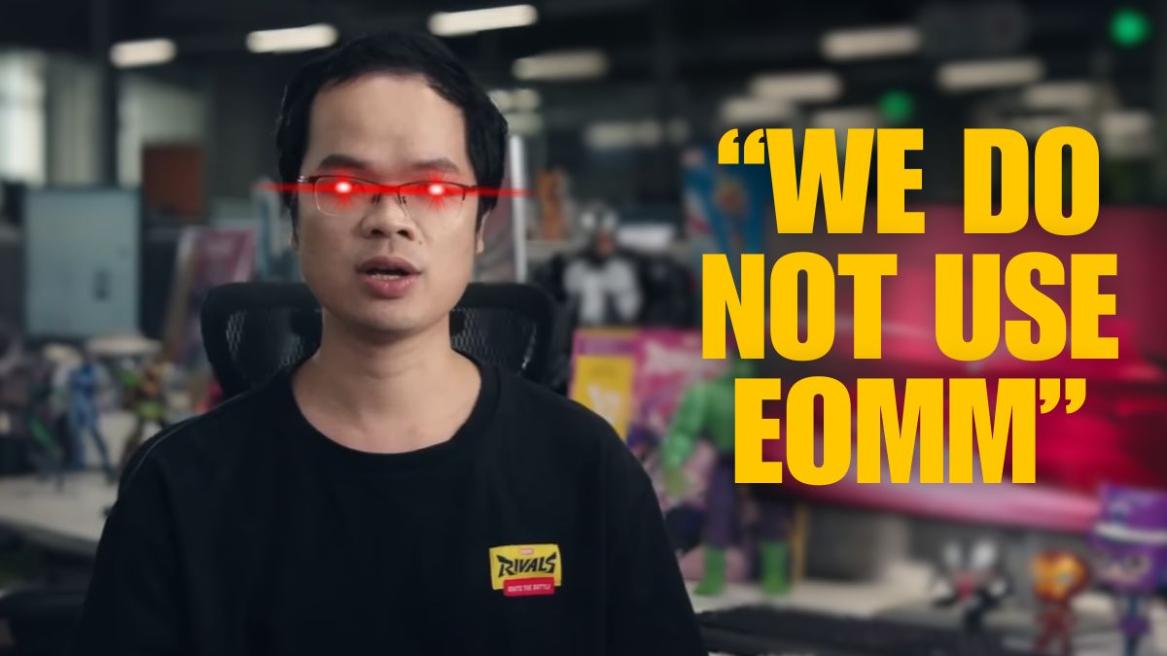Marvel Rivals rose quickly to prominence in the hero shooter landscape, reshaping the competitive scene and drawing players away from stalwarts like Overwatch 2 to claim a seat among the most-played titles. Its rapid ascent drew widespread attention, with fans praising its pace, character roster, and strategic depth. Yet as the community grew, a recurring topic surfaced in discussions across forums, social channels, and in-game chatter: the matchmaking system that pairs players into lobbies. Players reported persistent win and loss streaks that did not seem random, fueling a sense that matches were not simply a roll of the dice but could be influenced by factors behind the scenes. The conversations grew louder as more players described lobbies that felt unbalanced, with teams that appeared to skew toward certain skill distributions or roles, leaving others feeling that the system was not delivering truly fair competition. In this climate, speculation swirled around possible mechanisms that might be used to stabilize engagement, including the controversial concept of Engagement Optimized Matchmaking, or EOMM. The core concern was that such a system could subtly steer outcomes to maintain near-50% win rates, a balance some supporters might argue preserves player retention, while critics feared it erodes merit-based progression and the integrity of competition.
In the midst of this debate, NetEase, Marvel Rivals’ publisher, publicly addressed the chatter with a mid-August statement that denied the implementation of EOMM. The denial did not end the discussion, however, because it arrived after years of ambiguity around how matchmaking and ranking were judged and adjusted. The controversy had roots in part in NetEase’s 2020 OptMatch document, which highlighted a philosophy aimed at “player satisfaction” and discussed the importance of highly contested matches as a means to keep players engaged. That document, cited by observers as evidence that certain balancing or matchmaking choices might be designed with retention in mind, contributed to suspicions that the system could be tuned for a particular outcome rather than for purely objective fairness. In response to rising concerns, NetEase released a new video that promised to illuminate the complexities of Marvel Rivals’ matchmaking and ranking systems, signaling a push toward transparency and direct engagement with the community. The video aimed to address criticisms head-on and to describe the factors that influence how players are matched and how their rankings are determined, all with an eye toward clarifying misconceptions and providing a clearer explanation of the process for a broad audience.
NetEase’s Clarification: The Official Video and its Core Messages
A recently released Marvel Rivals video, presented under the banner of NetEase and featuring the game’s development team, takes aim at the core questions surrounding matchmaking and ranking. The video emphasizes that Engagement Optimized Matchmaking (EOMM) is not used to manipulate outcomes in order to maximize player retention. It is framed as a direct response to the questions and concerns that had circulated in the community, seeking to replace conjecture with a concrete, developer-provided explanation. The keynote promise of the video is to present a thorough, granular view of how the matchmaking algorithm works, including the roles of server selection, team composition, and the calculation of competitive scores that determine where a player sits on the ranking ladder.
Central to the video’s argument is the claim that the matchmaking search process, while designed to shorten wait times, operates within constraints that preserve the integrity of win/loss outcomes. The system increasingly prioritizes balance across teams by considering average competitive scores and the players’ ranks at the moment of search, rather than tweaking outcomes to wedge a desired result into every game. The developers argue that the observed streaks—long sequences of wins or losses—are the natural byproducts of probabilistic outcomes and dynamic shifts in team composition rather than deliberate interventions by the matchmaking system. In other words, what players experience as streaks may be explained by the inherent variability of human performance, the particular mix of heroes chosen in a match, and the fluctuating synergy that can arise when teams interact under pressure.
The video concedes that factors such as role selection and team cooperation can influence match results, acknowledging that these human elements can amplify or dampen streaks. However, the video stresses that these factors are not part of any “engagement plan” designed to bias outcomes toward retention. Instead, the video presents a framework in which team balance is achieved by structuring teams to minimize persistent disparities in average competitive scores, thereby encouraging fairer contests. It also addresses a known limitation: the lack of role locking. Without rigid role assignments, teams can single out roles that optimize performance in a given lobby, which can lead to imbalances within squads that feel uneven to players on the receiving end. The video argues that no hidden ELO or SBMM mechanism drives the matchmaking under the hood; rather, it depends on apparent ranks and observed performance, with the caveat that lower ranks can produce the perception of unpredictability due to the variability of skill levels within those ranks.
The developers also demonstrate practical steps for players who want to improve their odds of achieving balanced matches. They present a method for forming well-structured teams by aligning players with complementary roles and comparable skill levels, thereby reducing the likelihood of wide disparities in average competitive scores between sides. They show how to leverage collaboration and strategic planning to build cohesion, which can enhance performance in matches and contribute to a more satisfying competitive experience. At the same time, they acknowledge that the absence of role locking introduces potential internal imbalances within teams, especially when players rely on flexible roles rather than fixed positions. The video further clarifies that random matchmaking uses no concealed mechanisms to alter outcomes; instead, it relies on visible metrics such as ranks and recent performance, which can create a sense of unpredictability for players, particularly in the lower tiers where talent pools are broader and fragmented.
Importantly, the video does not present a definitive solution to every matchmaking challenge or guarantee perfect balance in every lobby. Rather, it offers a candid explanation of how Marvel Rivals’ system is designed to function, what factors influence matchups, and how players can adapt to maximize their chances of facing opponents of a similar caliber. The developers emphasize that the onus remains on players to assemble a squad that fits their preferred playstyle and roles, and that meaningful improvement often requires careful coordination, practice, and a willingness to adapt to the evolving meta. They emphasize that while the system strives to be fair, it is not a substitute for skill, strategy, and teamwork. The broader implication for the community is an invitation to engage with these mechanics in a way that blends strategic preparation with in-game flexibility, while recognizing that some variability in outcomes is an intrinsic part of any competitive environment.
This transparency push is framed as both an educational resource and a reassurance that the studio is listening to community concerns. By detailing the algorithmic logic, the video seeks to reduce mistrust and provide players with actionable steps they can take to optimize their matchmaking experiences. It also signals a commitment to ongoing refinement, acknowledging that developments in matchmaking theory and player behavior can necessitate adjustments over time. For fans and critics alike, the video serves as a focal point for ongoing dialogue: a basis on which players can gauge whether the system meets their expectations of fairness and clarity, while developers can gather feedback about which aspects of the experience most strongly influence perceptions of balance and quality of play.
Below are the principal takeaways from the video, synthesized to highlight how Marvel Rivals approaches matchmaking and what players can reasonably expect going forward:
- EOMM is not used to rig outcomes; the algorithm prioritizes server selection, team balance, and competitive scores to ensure fairness across matches.
- Wait-time reductions are achieved by gradually expanding search ranges, not by altering win/loss dynamics or manipulating the scoreboard.
- Perceived streaks arise from probability, random fluctuations, and the natural dynamics of team composition; while role selection and cooperation matter, they are not elements of a deliberate engagement plan targeting retention.
- Team balance is enhanced by structuring lobbies to minimize disparities in average competitive scores, but the absence of role locking can still create internal imbalances that affect the feel of a match.
- Random matchmaking relies on visible ranks rather than a hidden ELO or SBMM system, which can lead to a sense of unpredictability for players, especially in lower ranks.
- Players are encouraged to assemble balanced squads with clear roles that align with their strengths, enabling teams to control their own competitive destiny more effectively.
- The video frames these insights as a path toward improved transparency, better understanding of the matchmaking process, and a collaborative relationship between developers and the community.
The broader implication of this outreach is a shift in player expectations: rather than accepting a black-box system, players are invited to engage with the matchmaking mechanics, to recognize the limits of algorithmic balance, and to pursue vehicle strategies—such as stable team composition and coordinated play—that can lead to more consistent and satisfying outcomes. The developers’ position is that in a complex, dynamic competitive ecosystem, a combination of transparent explanations, practical guidance for forming balanced teams, and ongoing refinements to the matchmaking workflow can help restore trust and elevate the overall quality of the Marvel Rivals experience. As the community digests these insights, players are left with a dual takeaway: while perfection in matchmaking may be elusive, clarity about how the system operates—and proactive steps to work within it—offers a more stable, enjoyable path to mastery and success.
What do you think about Marvel Rivals’ current matchmaking system and its underlying algorithm? Share your experiences and perspectives in the comments as the community continues to discuss and evaluate the evolving landscape of Marvel Rivals’ competitive play.
Conclusion
Marvel Rivals sits at the intersection of popularity and procedural scrutiny, a position that invites ongoing attention to how its matchmaking and ranking systems operate. The debate about Engagement Optimized Matchmaking and the integrity of lobbies has persisted, intensified by observers’ interpretations of past strategy documents and by players’ subjective experiences of win and loss streaks. NetEase’s response, in the form of a transparent video, presents a nuanced picture: matchmaking is complex, influenced by server factors, team dynamics, and player-driven choices, yet not designed to manipulate outcomes for retention. The emphasis on balance, the acknowledgement of role-related impacts, and the insistence that no hidden ELO or SBMM mechanism exists all contribute to a narrative that seeks to restore trust while reinforcing the importance of player agency in building effective squads. As the Marvel Rivals community processes these explanations, players can adopt practical approaches—forming well-balanced teams, aligning roles, and communicating clearly—to maximize their enjoyment and success within the system.
The path forward for Marvel Rivals will likely involve a combination of ongoing transparency, iterative refinements to matchmaking algorithms, and an open channel for community feedback. For players who care deeply about competitive fairness and a satisfying progression curve, the key takeaway is to engage with the system intelligently: cultivate teamwork, practice role mastery, monitor performance trends, and seek to understand how average competitive scores shape matchmaking in your region and rank. In that spirit, the conversation around Marvel Rivals’ matchmaking is far from over, but the focus has shifted toward clarity, collaboration, and disciplined preparation as the foundation for a more balanced and rewarding competitive experience. The community’s verdict will continue to evolve as players test new team configurations, track outcomes, and share insights about how best to navigate the complexities of Marvel Rivals’ matchmaking landscape.



